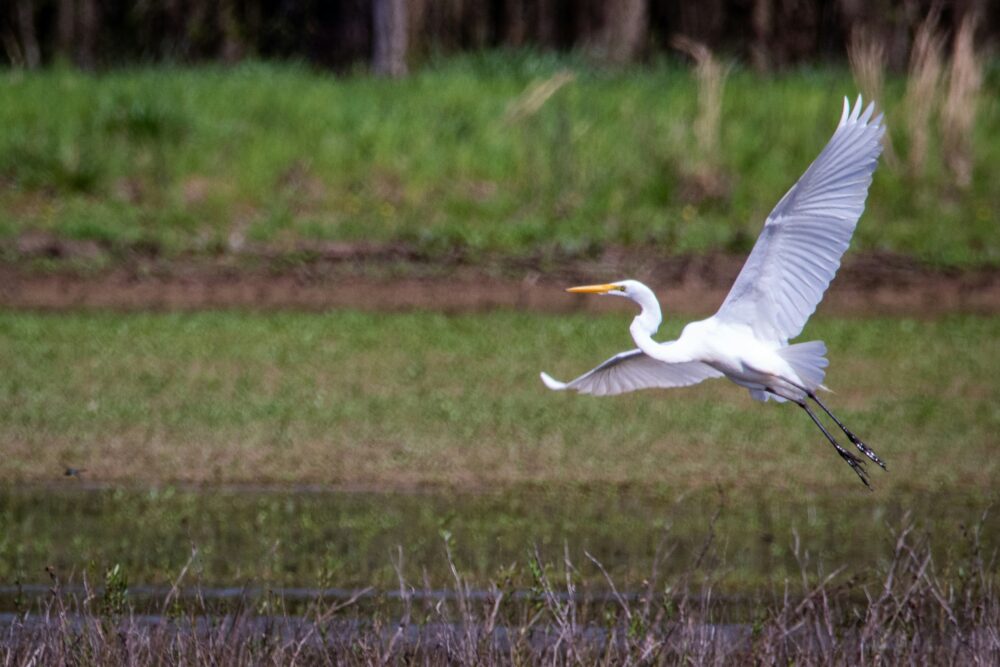We have much more to do and your continued support is needed now more than ever.
Removing Oil From Marshes Not Without Risk

Since the start of the Gulf oil disaster, the emergence of oil into the marshes of Louisiana has been one of the most pressing environmental concerns.
Currents and high tides can push oil deep into a marsh, saturating grasses, smothering plants and infiltrating the complex root systems which keep the fragile environment in place.
Clean-up crews have been using a number of techniques to cleanse the affected areas but experts say in some cases the best option may actually be to let the marsh heal itself.
As of late-August, approximately 108 of the state’s 5,700 miles of wetlands had been hit by oil. Some of the most heavily hit coastal marsh areas were in Louisiana near Grand Isle, Venice and eastern Barataria Bay.
At Bay Jimmy in Plaquemines Parish, large amounts of oil have come in direct contact with plants and grasses. Those plants survive in the salty environments by taking in oxygen through their leaves then transmitting it down to the roots. When its leaves are covered in oil, it essentially smothers the plant and when the plants that hold the marsh in place die, the marsh quickly falls victim to erosion.
There are a number of methods for cleaning up marshes, including:
- Vacuuming oil out with suction hoses.
- Removing it by hand.
- Cleaning and raking or burning it in place.
Could Cleaning Cause More Harm Than Good?
The Catch-22 of cleaning marshes is that while oil can wreak havoc in these fragile environments, the impact of humans going in there can do even more damage. Doug Inkley, senior scientist at NWF, said that the simple act of walking in the marsh can damage plants and stir up the soil. Bringing in heavy equipment, boats and an army of workers into a coastal marsh environment can have a more profound impact than the oil itself.
“It mixes up the different soil horizons, destroys vegetation, roots, kills organisms and is just not a good option. In some cases, it may be best to let the marsh heal itself, although the best option is to not let it get there in the first place,” said Inkley.
The U.S. Coast Guard and BP contractors laid out nearly two million feet of containment boom in the early summer to try to prevent oil from reaching the marshes. While it saved some areas from oiling, it actually trapped oil in other areas and made the situation worse.
Irving Mendelssohn, a professor at the Department of Oceanography and Coastal Sciences at Louisiana State University, said now that the oil is already there, anything that can cause more penetration of the oil into the soil is going to make the problem worse. Mendelssohn identified other options such as in-situ burning which can be done when there is a few inches of water over the marsh to avoid burning plant roots.
Vacuum Barges Removing 30,000 Gallons of Oil a Day
Another less intrusive option is using low pressure washing to flush oil from vegetation. The risk with that technique is that if the flow of water is too strong it will disturb and displace the soil.
“When there is not a lot of oil and the natural microbial activity has the ability to degrade it, then it may be best to [leave it in place]. The major reason for removing oil is when the volume is higher and there is a risk of it being transported elsewhere [via currents or tides],” said Mendelssohn.
Although it is a slow process, vacuuming oil with a suction hose has proven to be one of the least-intrusive and most effective ways of removing oil. In Bay Jimmy, vacuum barges have been removing up to 30,000 gallons of oil per day. Floating around the edges of the marsh, they can remove oil from the outskirts without causing further damage to the grasses.
Debate Over Shoreline Cleaners
There are also new shoreline cleaners on the market, a type of dispersant which manufacturers claim are 100 percent biodegradable, non-toxic and can be used in some marsh environments. Some of these products include HydroSOLVE and Evolve CM301. While demonstrations show they appear to effectively clean marsh grasses, Inkley advises against the use of any products or dispersants that have not been thoroughly tested.
“We’ve already seen what [negative impacts] dispersants can cause. I don’t think we should be trying anything in a marsh that hasn’t been thoroughly tested,” said Inkley.
Randy Lanctot, executive director of the Louisiana Wildlife Federation, said that techniques should be carefully chosen and fine tuned to the area where crews are working. In some areas that might simply be to leave things as they are. Lanctot said while Louisiana’s marshes have never seen an oil spill of this magnitude, tar balls and smaller spills are nothing new in the region.
“Some areas have been through this stuff before and survived. In places where there is minor oiling, I think [the marshes] can heal themselves and we’re soon going to find out how quickly,” said Lanctot.
[youtube]http://www.youtube.com/watch?v=1kPGTqdDOI4[/youtube]
In a Cape Cod marsh that was heavily oiled decades ago, the damage has been persistent. In this video, NWF looks back at how another oiled wetland has been slow to recover.
//





















